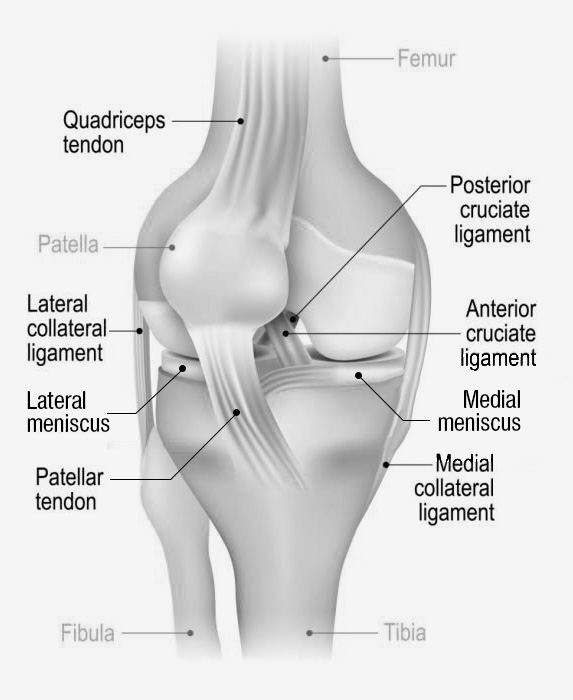Anterior Cruciate Ligament (ACL) Reconstruction
What Is an Anterior Cruciate Ligament Reconstruction?
The Anterior Cruciate Ligament (ACL) is one of the key ligaments in the knee, playing a crucial role in providing stability, especially during movements that require cutting, pivoting, or sudden directional changes, such as dodging an opponent in football. Without a functioning ACL, the knee may give way, leading to pain and recurrent injuries.
An ACL reconstruction is a surgical procedure aimed at restoring knee stability by replacing the torn ACL with a graft. The most common grafts used for ACL reconstruction are the patient’s own hamstring tendon or the middle third of the patella tendon. Other graft options may be considered based on the individual circumstances of the patient.
Who Should Have an ACL Reconstruction?
Not every person who tears their ACL will need surgery. For around 90% of people, a rehabilitation program to strengthen the muscles around the knee may be sufficient, allowing them to live without significant symptoms on a daily basis. However, for the remaining 10%, ACL tears cause instability, and these individuals are at risk of further damage from repeated episodes of their knee “giving way.”
ACL reconstruction is particularly recommended for individuals who are active in sports that require pivoting, cutting, or other movements that put excessive strain on the knee. Without a functional ACL, the knee may collapse during these activities, leading to further damage. Additionally, for people who experience complex injuries involving multi-ligament damage, meniscal tears, or cartilage defects, ACL reconstruction will be necessary to restore knee stability.
Why Do People Have ACL Reconstruction Surgery?
For the majority of patients who undergo ACL reconstruction, the procedure leads to:
- Restoration of Knee Stability: The surgery stabilises the knee, making it less likely to “give way.”
- Return to Active Sport: Most people can return to their chosen sport after surgery, with the knee being as stable as it was before the injury.
- Improved Daily Living Activities: A stable knee can improve mobility, making everyday tasks easier and less painful.
- Enhanced Quality of Life: Patients experience greater confidence and a more active lifestyle without the fear of instability.
What Are Alternatives to ACL Reconstruction Surgery?
In some cases, surgery may not be necessary, and alternative treatments may be sufficient to manage symptoms:
- Avoidance of High-Risk Sports: Some individuals may choose to retire from sports that involve pivoting and cutting movements to prevent further injury.
- Rehabilitation Program: A comprehensive physiotherapy program focused on strengthening the muscles around the knee can help manage symptoms from an ACL tear and improve overall function.
- Hinged Knee Braces: For those who still wish to participate in sports but want to avoid surgery, a customised hinged knee brace can provide additional support and reduce the risk of instability during activity.
What Are Possible Complications of ACL Reconstruction Surgery?
Like all surgeries, ACL reconstruction carries risks, though over 90% of patients can return to their chosen sport after recovery. However, complications can occur, and understanding the risks is essential:
- Re-injury or Graft Failure: The graft can fail or re-rupture, especially within the first 12 months following surgery as the graft matures. This can happen if the knee is subjected to excessive stress or if rehabilitation is not followed correctly.
- Blood Clots (DVT): Early mobilization is critical to prevent deep vein thrombosis (DVT), which is a blood clot that can form in the leg. Signs to watch for include tenderness, redness, or swelling in the calf, thigh, ankle, or foot.
- Infection: While rare, infections can occur. Symptoms include fever, chills, increased swelling, tenderness around the surgical site, or drainage from the wound. Keeping the incision sites clean and covered is vital.
- Stiffness: If the knee does not move properly after surgery, it may be necessary to address this with physical therapy or other interventions.
To minimise these risks, it is crucial to follow post-operative care instructions carefully and recognise signs of complications early. Contact your surgeon immediately if you experience any concerning symptoms.
When Is Revision Surgery Necessary?
Occasionally, after an ACL reconstruction, a person may re-injure their knee or re-rupture the graft. This is a rare occurrence but is a possibility that should be discussed with Mr Richardson if it happens. Revision surgery may be required to repair or replace the graft, depending on the extent of the injury and the individual’s circumstances.

